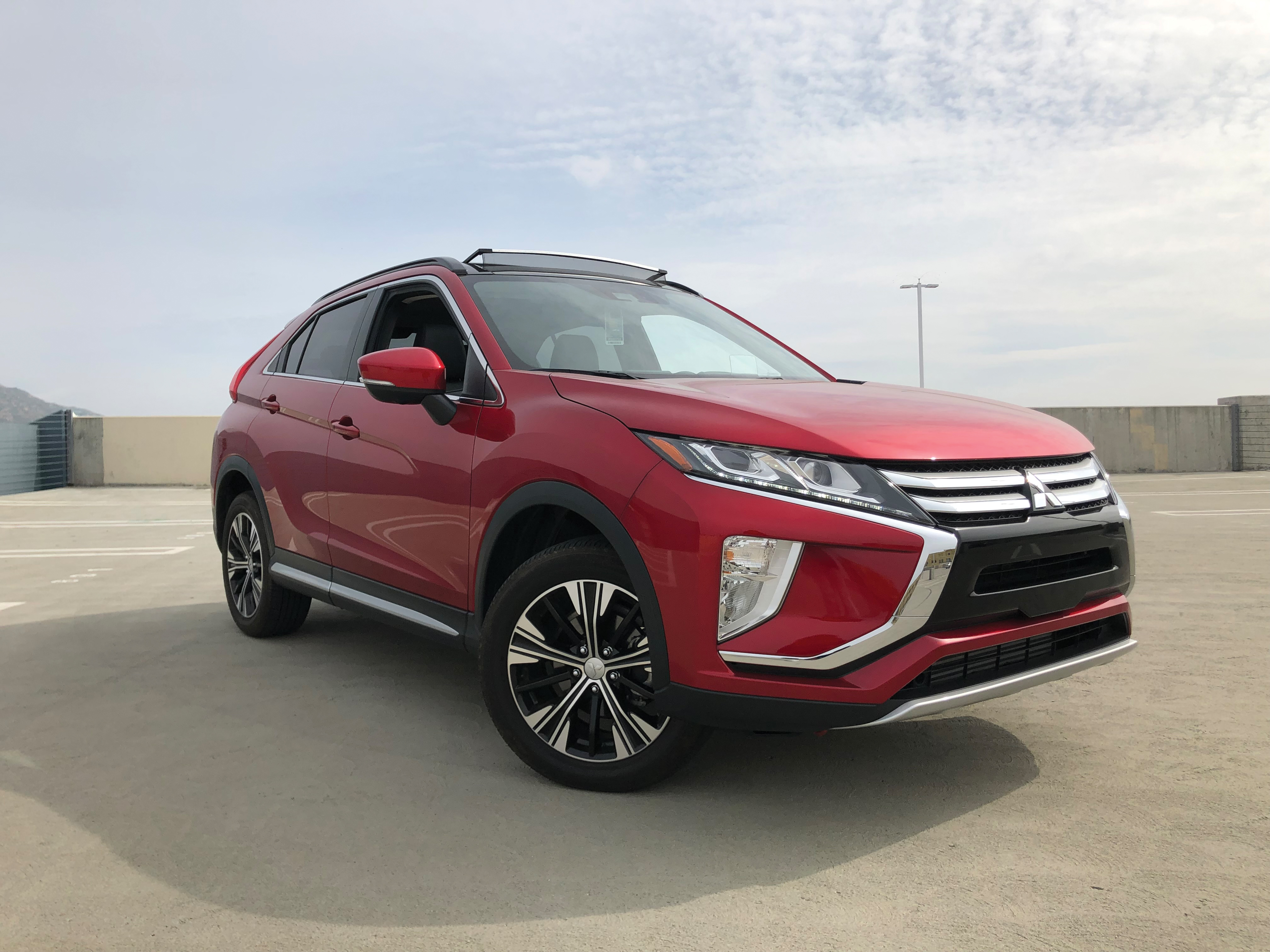
Mitsubishi is a brand that was once known to build fun-to-drive inspiring sport compacts — that hasn’t been the case for the last decade where Mitsubishi’s lineup has been composed of bland and outdated sedans and SUVs. But now, Mitsubishi plans to reinvigorate their lineup by tapping into the 1990s nostalgia with the new Eclipse Cross.
Today’s youth and young adults are very familiar with the Mitsubishi Eclipse name. The original Eclipse was a fun and sporty compact sports car that even garnered a big screen role with the “2 Fast 2 Furious” movie in 2001. The reintroduced Eclipse Cross, however, shares nothing in common with its predecessor other than its name.
For a brand that’s been a former shell of itself, the Eclipse Cross is Mitsubishi’s attempt to rise back into relevance. Mitsubishi is riding the crossover wave taking the automotive industry by storm and has reintroduced the Eclipse nameplate onto a practical yet sporty-looking SUV. Suffice to say, the new Eclipse Cross is a far cry from its better-manufactured predecessors.
The exterior styling of the Eclipse Cross is very polarizing to say the least. The body is characterized by sharp lines and edges while the rear quarter of the Eclipse Cross harks back to the infamous Pontiac Aztek. The SEL Model I used for this test came equipped with standard LED headlights and all Eclipse Cross’ come standard with LED taillights. Step inside, and you’ll find a nice array of materials given the low price point. There is an absence of hard plastics and cheap materials as well as ample space for both first and second row passengers. However, in comparison to its competitors, the Eclipse Cross interior is underwhelming.
All Eclipse Cross models come equipped with seven inch touch screens which can be controlled via a finicky touchpad in the center console. I found it much easier to control the info-tainment system with the touch screen rather than with the touchpad, which was sometimes unresponsive and counterintuitive. The used SEL Model I came with the optional Android Auto or Apple CarPlay systems which are offered in place of traditional navigation systems as well as the optional Rockford Fosgate sound system. My favorite feature on the Eclipse Cross however was the camera system that allowed the driver to see how close they are to the curb and the car in front in addition to a bird’s-eye view camera. In theory, this is a great feature for urban dwellers who park in tight places.
Driving dynamics are where the Eclipse Cross completely falls flat. The sole powertrain offering for the Eclipse Cross is the underpowered 152 horsepower 1.5 liter turbo-charged four-cylinder combined with a continuously variable transmission powering either the front or all wheels. That’s enough to take the Eclipse Cross to 60 miles an hour in 8.6 seconds which is by no means fast but sufficient enough for around town. On the highway however, you notice that the plucky little engine loses steam quickly leaving a desire for more power. The suspension is clearly tuned for comfort which pays off in terms of ride comfort but creates uninspiring steering and handling. That’s disappointing considering the Eclipse Cross is made to be a sportier offering among Mitsubishi’s crossovers and crossovers in this segment altogether.
The Eclipse Cross does little to set itself apart from the rest of the competition other than funky looks. Looks only take you so far however since once you get behind the wheel, you’ll find an acceptable interior and subpar driving dynamics. The Eclipse Cross does little to put respect on the name of the car whose name it shares, it has no enthralling traits sharing nothing in common with the Eclipse sports car many fans fondly remember. Instead of delivering us a unique product displaying Mitsubishi’s flair, they have simply delivered another vanilla product wrapped around in bold styling.
Chief Competitors: Honda HR-V, Jeep Renegade, Mazda CX-3, Nissan Rogue Sport, Toyota C-HR
The car used in this review was provided courtesy of Mitsubishi Motors USA.
Are you in the market for a new or used car but don’t know where to start? Reach out to me at thefastlane.highlander@gmail.com and I’ll help you with the search.
| Rating among Compact SUVs | |||
| Powertrain & Chassis (5) | Interior/Exterior
(5) |
||
| Acceleration | 2.5 | Front Seat Comfort/Space | 3.5 |
| Transmission | 2.5 | Rear Seat Comfort/Space | 3.5 |
| Fuel Economy | 3 | Cargo Space | 3 |
| Steering Feel & Handling | 2 | Fit and Finish | 3.5 |
| Brake Feel | 3.5 | Features | 4 |
| Ride | 3.5 | Interior Styling | 3 |
| Value | 3.5 | Exterior Styling | 3 |
| Overall | 3 | ||
Data Sheet
| Engine | turbocharged and intercooled DOHC 16-valve inline-4, aluminum block and head, port and direct fuel injection |
| Transmission | 8 Speed Continuously Variable Transmission |
| Horsepower | 152 @ 5500 |
| Torque | 184 @ 3500 |
| 0-60 | 8.6 seconds |
| 0-100 | 30.2 seconds |
| Top Speed | 118 mph |
| Fuel Economy | 25 city/26 highway |
| Base Price | $23,595 |
| Price as Tested | $32,610 |







